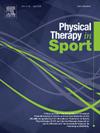Implications of tendinopathy on the sports career: Epidemiological and clinical profile of high-performance athletes
IF 2.2
3区 医学
Q1 REHABILITATION
引用次数: 0
Abstract
Objective
To identify the prevalence of tendinopathy and describe the predictive factors of condition and chronic tendon pain in high-performance athletes.
Design
Cross-sectional observational study.
Setting
Sports training centers and competitions.
Participants
Federated high-performance athletes.
Main outcome measures
Tendinopathy and chronic tendon pain.
Results
Out of all recruited athletes, 30.6% had a confirmed diagnosis of tendinopathy. Tendinopathy prevalence was 36.5% in athletes with extremely high training exposure index (TEI), compared to 21.9% in those with low TEI (p = 0.03). There was a significant difference in the prevalence of tendinopathy sites between the sport modalities, TEI classification and sex. Almost 60% had chronic tendon pain, 48% had required a break from training, and 19% reported that the condition affected two or more tendons. Being older than 25 years (OR = 3.5; 95%CI = 2.0–6.2), female sex (OR:0.5; 95%CI:0.3–0.9) and receiving nutritional guidance (OR:1.7; 95%CI:1.3–2.4) were identified as factors associated with tendinopathy. Protection from chronic tendon pain was associated with male sex (OR:0.6; 95%CI:0.3–0.9) and nutritional guidance (OR:0.5; 95%CI:0.3–0.9).
Conclusion
This study reports the difference of tendinopathy prevalence according to sexes stratified by TEI classification. Chronic tendon pain was associated with female sex, lack of nutritional guidance, and more than three episodes of condition manifestation.
肌腱病对运动生涯的影响:高水平运动员的流行病学和临床特征
目的了解高水平运动员肌腱病变的患病率,描述其病情和慢性肌腱疼痛的预测因素。设计横断面观察性研究。设置体育训练中心和比赛。参与者:联邦高水平运动员。主要观察指标:肾脏病变和慢性肌腱疼痛。结果在所有招募的运动员中,30.6%确诊为肌腱病变。训练暴露指数(TEI)极高的运动员肌腱病变患病率为36.5%,而TEI较低的运动员为21.9% (p = 0.03)。在运动方式、TEI分类和性别之间,肌腱病变部位的患病率存在显著差异。近60%的人患有慢性肌腱疼痛,48%的人需要暂停训练,19%的人报告说这种情况影响了两个或更多的肌腱。年龄大于25岁(OR = 3.5;95%CI = 2.0-6.2),女性(OR:0.5;95%CI: 0.3-0.9)和接受营养指导(OR:1.7;95%CI: 1.3-2.4)被确定为与肌腱病变相关的因素。对慢性肌腱疼痛的保护与男性有关(OR:0.6;95%CI: 0.3-0.9)和营养指导(OR:0.5;95%置信区间:0.3—-0.9)。结论本研究报告了按TEI分类进行性别分层的腱鞘病患病率的差异。慢性肌腱疼痛与女性、缺乏营养指导和超过三次的疾病表现有关。
本文章由计算机程序翻译,如有差异,请以英文原文为准。
求助全文
约1分钟内获得全文
求助全文
来源期刊

Physical Therapy in Sport
医学-康复医学
CiteScore
4.50
自引率
8.30%
发文量
125
审稿时长
39 days
期刊介绍:
Physical Therapy in Sport is an international peer-reviewed journal that provides a forum for the publication of research and clinical practice material relevant to the healthcare professions involved in sports and exercise medicine, and rehabilitation. The journal publishes material that is indispensable for day-to-day practice and continuing professional development. Physical Therapy in Sport covers topics dealing with the diagnosis, treatment, and prevention of injuries, as well as more general areas of sports and exercise medicine and related sports science.
The journal publishes original research, case studies, reviews, masterclasses, papers on clinical approaches, and book reviews, as well as occasional reports from conferences. Papers are double-blind peer-reviewed by our international advisory board and other international experts, and submissions from a broad range of disciplines are actively encouraged.
 求助内容:
求助内容: 应助结果提醒方式:
应助结果提醒方式:


